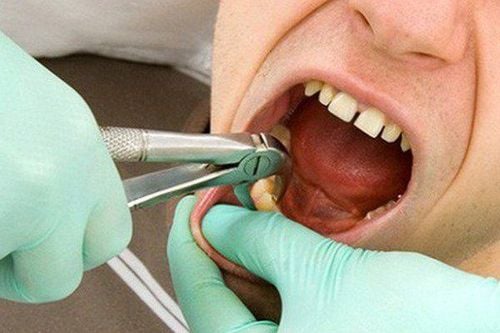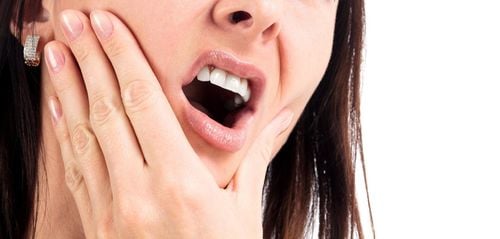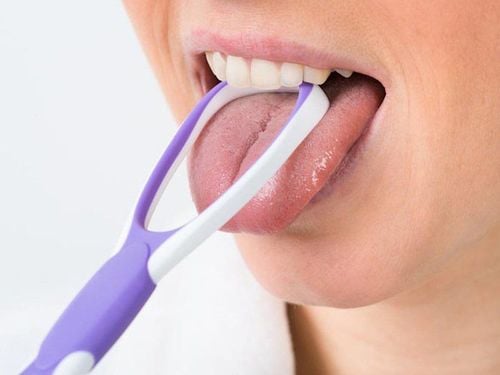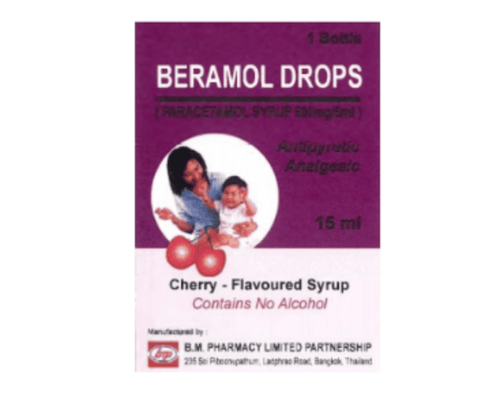This is an automatically translated article.
The article is professionally consulted by Master, Doctor Dang Tien Dat - Doctor of Odonto-Stomatology - Department of Medical Examination and Internal Medicine - Vinmec Ha Long International General Hospital.Dry socket (or alveolar osteomyelitis) is a common complication after tooth extraction. Treatment of dry socket is mainly to reduce pain symptoms by measures such as cleaning the socket, using anti-inflammatory drugs, pain relief and home care.
1. What is dry socket?
Dry alveolitis (or alveolar osteomyelitis) is a common pain after the extraction of a permanent tooth. Dry socket occurs when a blood clot at the extraction site fails to develop, or it deforms or dissolves before the wound has healed.
Normally, after you have a tooth extracted, a blood clot will form at the empty tooth socket according to the natural clotting mechanism to protect the bones, muscles, tissues and nerves below. Blood clots also play a fundamental role in the growth of new bone and the formation of soft tissue on top of the clot. In the case of alveolar osteomyelitis, a blood clot will not be able to form at the site of the tooth extraction. This condition can lead to infection, which can contact the bone and nerve underneath the tooth socket, leading to severe pain that persists for 1 to 3 days or more. Pain is not only concentrated in the area where the tooth is extracted, but also spreads along the nerves, radiating along the edge of the face. In addition, the inflamed alveolar bone can also be a place for food debris to enter while eating, making the sharp pain even more uncomfortable.
Dry socket is the most common complication after tooth extraction, such as wisdom tooth extraction. In most cases, over-the-counter pain relievers alone will not be enough to treat pain caused by dry socket. A dentist or oral surgeon can provide additional treatment to address a patient's severe pain.
2. Diagnosis of dry socket
Usually, if the patient feels severe pain after a tooth extraction, it is a sign enough for the dentist or oral surgeon to suspect dry socket. However, the doctor may also ask about some other symptoms and examine the patient's mouth for a blood clot in the tooth socket or check the patient for exposed bone.
Sometimes, the doctor may perform an X-ray of the mouth and teeth to rule out other conditions, such as a bone infection (osteomyelitis) or small pieces of bone left in the wound after tooth extraction.
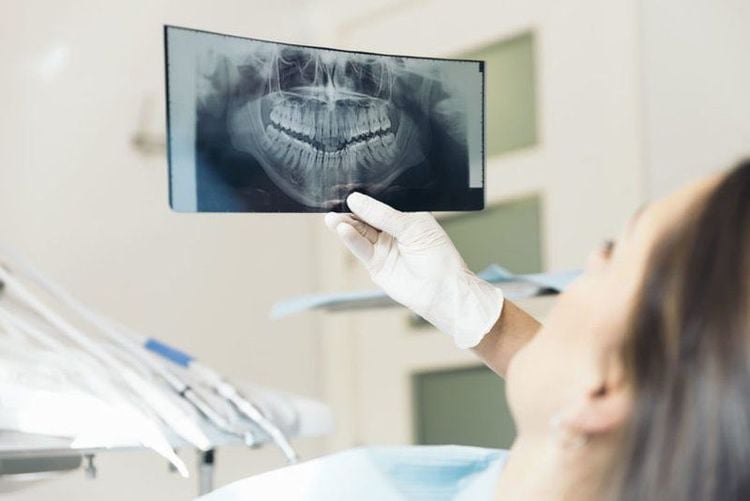
3. Treatment of dry socket inflammation
Treatment of dry alveolar osteomyelitis is mainly to relieve symptoms, especially pain. Measures to treat dry socket inflammation include:
Alveolar cleaning: Clean the socket to remove food particles or debris located in the socket. This is the most common cause of pain and infection; Dental Wound Bandage: Cover the painful socket with a medicated gel, paste, or other dressing material. This is a relatively quick way to relieve alveolar pain. Depending on the severity of the pain and other symptoms, the doctor will decide if the patient needs a dental dressing, the number of dressings and other additional treatment; Painkiller: The doctor will choose a pain reliever that is most suitable for the patient's situation. It can be a prescription or over-the-counter pain reliever; Self-care at home: After the bandage is removed, you need to regularly clean the socket at home to remove food debris and create conditions for the dry socket to heal quickly. Alternatively, you may be given detailed instructions and a plastic syringe with a curved tip to collect and spray with water to flush the area of alveolitis (plain water, saline, or prescription rinses can be used). doctor). The patient should continue rinsing until the socket is free of any debris. Once treatment is started, the pain will usually be significantly reduced. Pain symptoms and some other symptoms, if any, will continue to improve gradually and may disappear in a few days. However, make a follow-up appointment with your dentist to change the dressing or have some other necessary check-ups.
4. Home remedies for alveolar osteomyelitis
Patients can completely promote wound healing and reduce uncomfortable symptoms during the treatment of dry socket with the following tips:
Use pain relievers at the prescribed dose; Avoid smoking or using tobacco-like products; Drink plenty of water to stay hydrated and avoid nausea (associated with some pain medications); Gargle gently with warm salt water several times a day; When brushing teeth, pay attention to only brushing gently around the dry socket; Use caution when eating or drinking, avoid carbonated drinks, stimulants and avoid using a straw (to avoid dislodging the bandage).
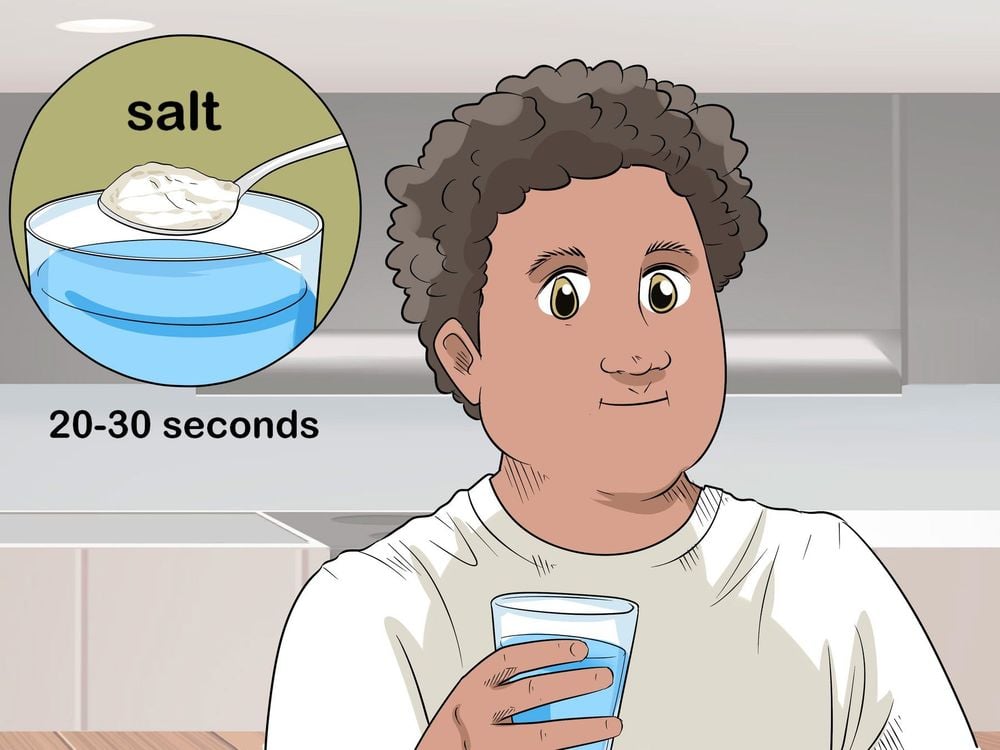
5. Prevention of dry socket after tooth extraction
Usually after a tooth extraction, you will receive some advice from your doctor to deal with the symptoms that occur during the healing process after the extraction, as well as instructions on how to care for the wound. Proper alveolar care at home after tooth extraction will help shorten the healing process and prevent injuries such as alveolar osteomyelitis :
Activities: After tooth extraction, plan a reasonable rest during the day. Follow your dentist's recommendations about limiting exercise or extreme sports that can lead to blood clots in the socket; Appropriate pain relief: Apply a cold pack to the outside of the cheek for the first day after tooth extraction and a warm pack for the rest of the day to reduce pain and swelling. Take pain relievers as directed by your doctor's prescription and as directed by your healthcare provider; Drink water: Drink plenty of water after tooth extraction. Avoid alcoholic beverages, caffeinated drinks, carbonated soft drinks and hot water. Avoid using a straw because the action of sucking water can cause the blood clot to come off, which can easily lead to alveolar osteomyelitis; Eat foods: Eat only soft, liquid foods, such as yogurt or porridge, for the first day after tooth extraction. When the anesthetic has not worn off, be careful when eating to avoid eating foods that are too hot, too cold or biting on the cheek while eating. Only eat hard, crunchy foods when the wound is relatively healed. Avoid chewing food on the side of the extracted tooth; Oral hygiene: After tooth extraction, you can gently rinse your mouth and brush your teeth, but the extraction site should be avoided for the first 24 hours. After 24 hours, you can gently gargle with warm salt water several times daily for a week. Mix half a teaspoon of table salt in about 237 ml of water or make an oral hygiene solution according to your dentist's instructions; Avoid smoking: If you have a habit of smoking or using tobacco-related products, you should limit it for at least 48 hours after tooth extraction. Using tobacco products can delay wound healing and increase the risk of complications.
Feeling pain and discomfort is normal after tooth extraction. You can control pain by taking medication as directed by your doctor. However, if the pain occurs continuously and does not go away, it is most likely a sign of alveolar osteomyelitis, which requires a follow-up examination for treatment.
The team of doctors specializing in Odonto-Stomatology at Vinmec International General Hospital with enthusiasm and love for the profession, always wants to bring customers the best quality of service. In addition to being invested in modern equipment, the Odonto-Stomatology Department at the hospital also cooperates with leading experts at frontline hospitals in the country and abroad to diagnose and treat diseases. related to the field of Odonto-Stomatology, in order to bring the best medical examination and treatment effect to customers.
Please dial HOTLINE for more information or register for an appointment HERE. Download MyVinmec app to make appointments faster and to manage your bookings easily.
Reference source: Mayoclinic.org




